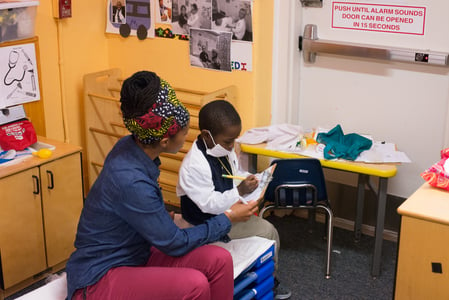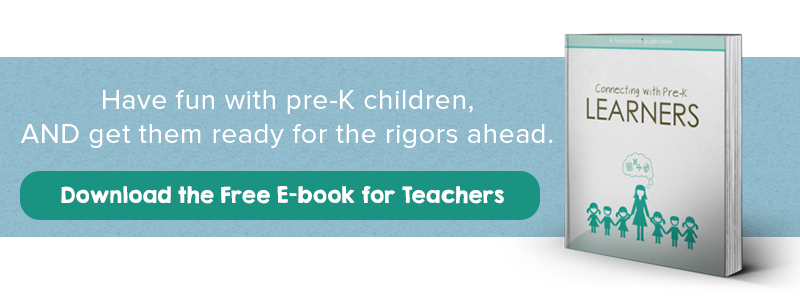
I could sit for hours watching a group of young children play. And I am lucky enough to have the opportunity to do so as an observer in toddler and pre-K classrooms around the country. The freedom with which children explore and use materials, test and experiment, and practice new strategies is fascinating and educational to watch.
Many pre-K teachers adhere to the theory that free-choice or center time should be a time for children to be in control. They see center time as a time for students choose what they play with, how they manipulate the materials, and when to stop. These educators believe that children’s decisions and independence should be respected, so it’s their job to be present only as a support when needed.
But, there's another common theory. Other teachers believe that they should and must be present to facilitate, scaffold, and teach as children play. These two differing viewpoints raise a great question:
Should teachers be “Play-Observers” or “Play-Facilitators”?
After spending nearly 30 years working with young children, I question why there needs to be an “or” at all. I believe that we should replace it with an “and.” After all, both the observer and the facilitator functions serve important purposes.
Let’s imagine a child who is working with Play-Doh in your classroom. You can gather a lot of informal assessment notes by observing. After all, there are many internal functions going on in that student’s brain as she presses, rolls, forms, and cuts the dough. She may be comparing it to her mother’s manipulation of dough as she makes pupas, or she may be processing the texture of the medium.
While watching her play, you might use parallel talk, “I notice that you are using a rolling pin to flatten your dough.” Or, you could make an observation, “Those look like the doughnuts we ate for breakfast yesterday.” Maybe you wonder out loud, “I wonder if that’s how your Tia makes her tortillas.”
Whichever strategy you choose, your audible observations can enhance what the child is learning while she works independently.
“Tell me about what you’re doing.”
This simple sentence is an age-old language facilitation strategy. It can open many doors for the child working with Play-Doh.
You can follow up that statement by encouraging comparisons, “Does it feel anything like the shaving cream we worked with last week?” Or instead you can ask her to make connections to the real world, “Is that how you saw a pizza maker make crust?” Maybe you integrate it with a recent activity, “How is Play-Doh like the cookie dough we baked with last week?” You can use that as a vocabulary stimulator, “It can be flattened like a pancake or manipulated into a ball.”
You can also use it at beginning of a conversation, “What are you trying to make with that? How do you plan to do that? What else might you use to make sure it looks like ________?”
These are just a few of the ways teachers develop new learning opportunities for young children during their independent play.
Yes, we can learn a great deal by watching them play, but they can also learn a lot when we join in.
Let’s not make it a chicken or the egg question. Let’s do both.

